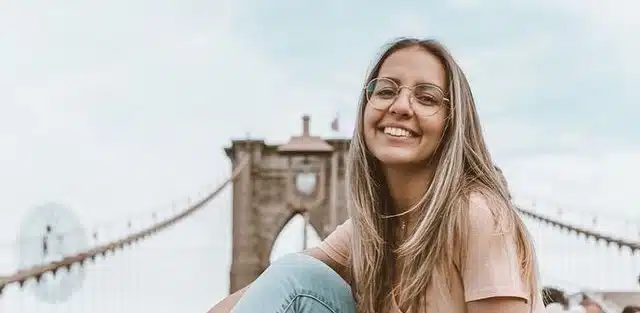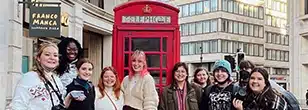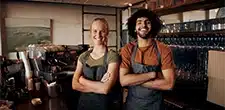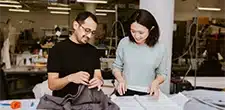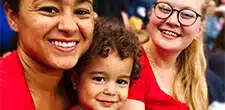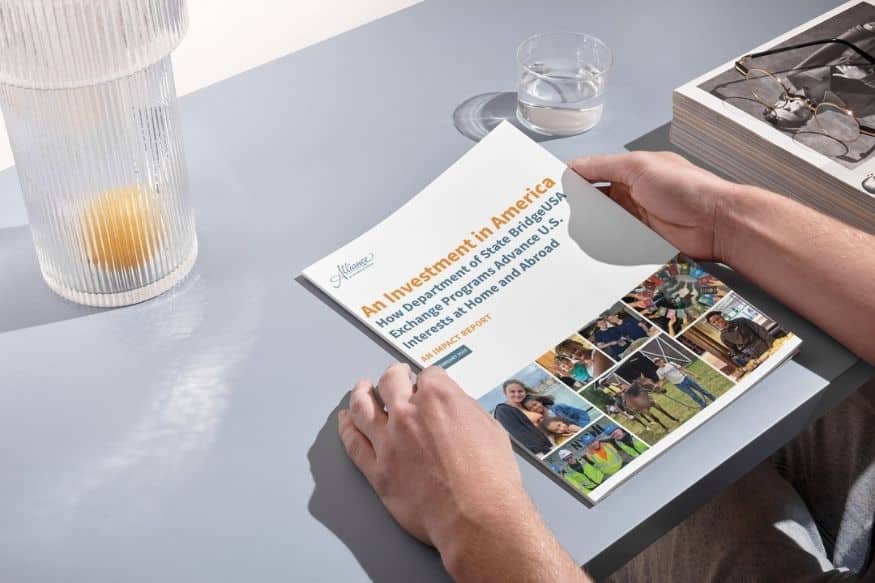Anastasia A., an Interior Design Intern from Russia, is currently completing her internship program with Karim Rashid in New York. While pursuing her Bachelor’s degree at Moscow State S.G.Stroganov Academy of Design and Applied Arts, Anastasia created her own design studio and previously interned with another design firm in Russia. Using this experience, Anastasia wanted to push her professional career a step further by acquiring the latest skills and knowledge in the design world on an international level. By learning to put into practice her talent for design with projects at Karim Rashid, Anastasia hopes that her internship experience will elevate her understanding of clients’ needs and projects and help her to become a well-rounded designer.
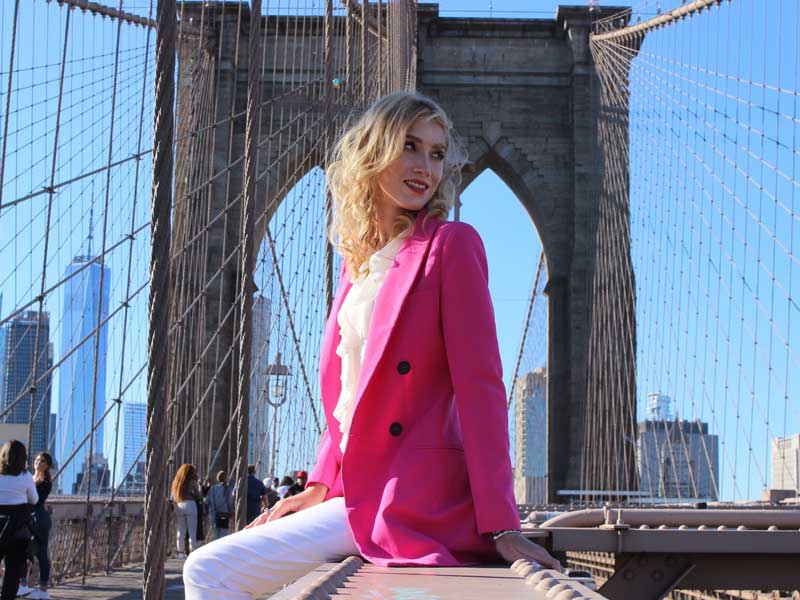
Image courtesy of Anastasia A.
Anastasia checked in with InterExchange to talk more about her experience in the U.S., and what she has learned so far!
InterExchange: Tell us about your internship search process: How did you find your host? How long did it take? What resources did you use, if any?
Anastasia: “I met Karim Rashid at a presentation in Russia, where he was discussing his design of the lobby in a new residential complex. After that presentation, I wrote to him on Instagram and inquired about an internship at his firm. From there, I sent my portfolio and CV by email and began the interview process.”
InterExchange: What is a typical day at your internship like?
Anastasia: “Once or twice a week, I train with the spatial design director of the studio, and I’ll go on a site visit with him to learn more about the reconstruction process. After this, we return to the office and once again, go over all the nuances and questions that the builders and the clients have about the implementation.
On other days, the mornings begin with generation of ideas and sketches, and then a brainstorming session is carried out and the whole team discusses whether these ideas are acceptable or not. I’m working on different components for a design of an interior. I usually start off by drawing sketches with my preliminary idea and then I make models in Rhino for a future interior. Once I do this, I work on creating a rendering of it in 3D Max and work with Furniture, Fixtures, Equipment (FFE) and a Design Development (DD) set. Edits are made by the team and then I start improving these sketches in 3D programs, giving them volume and realism.”
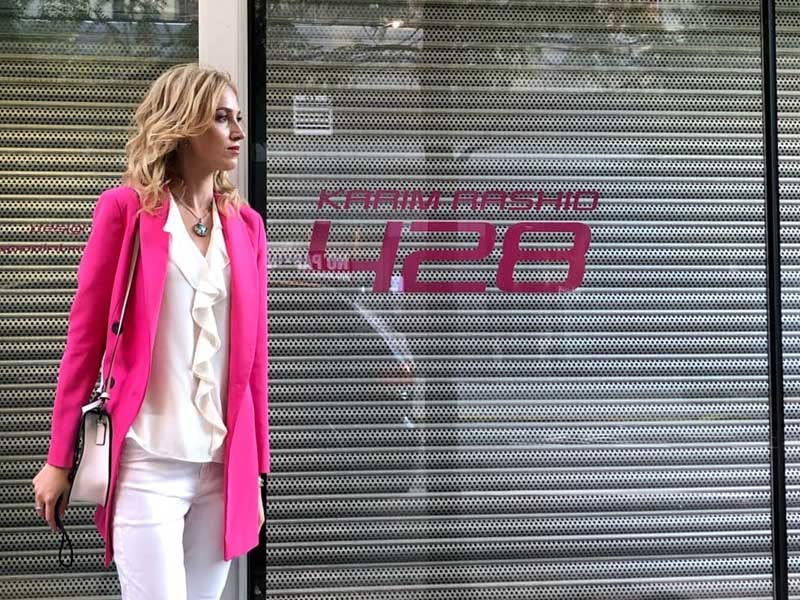
Image courtesy of Anastasia A.
InterExchange: What are some professional goals you have achieved thus far in your program?
Anastasia: “During this internship, I have learned so much! First of all, I’ve learned the methodology of working on international projects and the speciality of Karim Rashid’s company. I also learned how to make models of organic shapes in Rhino, ergonomics of public spaces, a system of tags in a DD set (which allows you to structure all data), how to be a part of a team and how to think about today’s design without looking back at past developments. This has allowed me to have the ability to feel the beauty and relevance of flowing bionic forms and how to work with color and prints.”
InterExchange: In addition to the professional experience, what have you enjoyed most about interning with your employer?
Anastasia: “I really enjoy the creative atmosphere of working alongside my colleagues at Karim Rashid. I feel a freedom of creativity and self-expression when I create my projects, while also being supported by my team when I have questions or need help with a project. I have really enjoyed working with them because they are all positive and creative people with a unique vision. It has been very interesting to learn more and pick their brains about their creative process.”
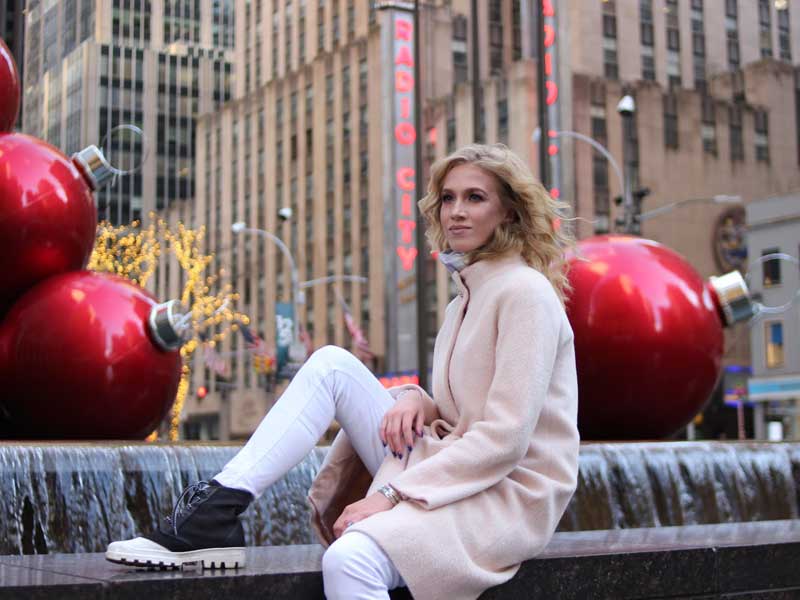
Image courtesy of Anastasia A.
InterExchange: Share examples of how you’ve learned more about U.S. culture and how you’ve shared your culture with others.
Anastasia: “Before the program, I made a plan of places in the USA that I really wanted to see. Every week, I keep track of new cultural events and make sure to book a reservation in advance. I mainly visit museums, art galleries and exhibitions about art, design and architecture. In the office, we very often discuss the differences between the Russian and American views on design, our differences in mentality and culture. I find this to be very beneficial when it comes to me as a designer and try to figure out ways to implement some techniques to Russian culture.”
InterExchange: What would you tell a friend from your own country to encourage him/her to do an internship through InterExchange?
Anastasia: “I would definitely tell my friends that doing this program is an amazing and unique experience that will expand their worldview. InterExchange has been very helpful and answers any questions I need!”


